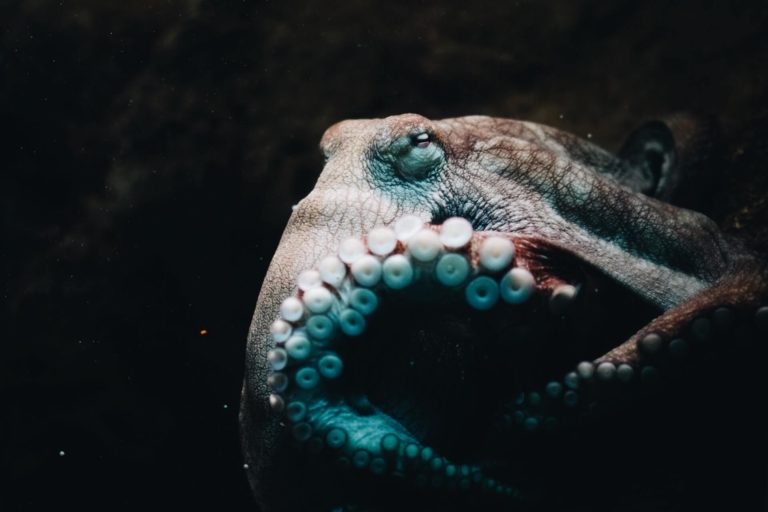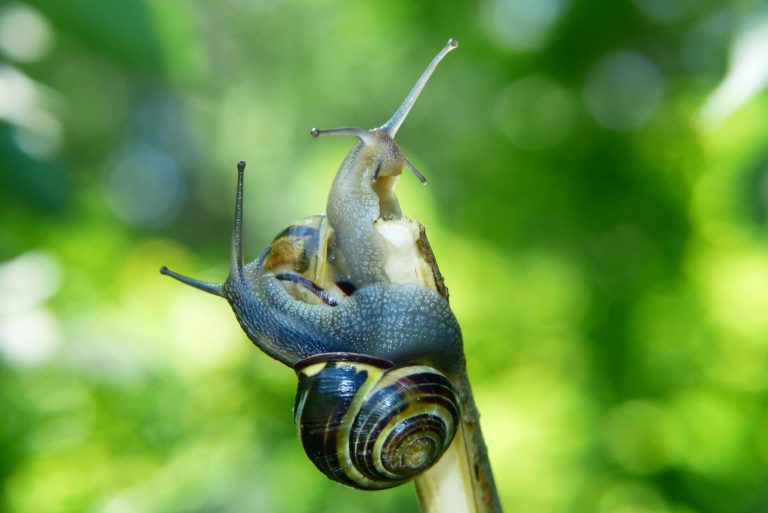PHYSIOLOGY: MOLLUSCS
CEPHALOPODS
Larson S. E., Anderson R. C. (2010): Fecal hormones measured within giant pacific octopuses Enteroctopus dofleini. Journal of Aquatic Animal Health 22: 152-157.
FULL TEXT
Abstract
The captive husbandry of giant Pacific octopuses Enteroctopus dofleini is well understood, but their endocrine signatures are not well documented. The major vertebrate reproductive hormones—estrogen, progesterone, and testosterone—and the stress-related hormone corticosterone are relatively well known for many vertebrate species. However, few studies on these hormones within invertebrates have been conducted. Our hypothesis was that endocrine signatures within octopuses are similar to those found within vertebrates in response to reproductive activity and stress. Using standard immunoassay techniques, we measured fecal steroids within fecal samples collected from five female and three male giant Pacific octopuses housed at the Seattle Aquarium. The mean estrogen level ranged from 3.67 to 99.39 ng/g of feces, progesterone ranged from 44.35 to 231.71 ng/g feces, testosterone ranged from 9.30 to 18.18 ng/g feces, and corticosterone ranged from 10.91 to 22.14 ng/g feces. The results suggest that octopus fecal hormones are similar to those in vertebrates and may be useful in measuring ovarian activity and stress within captive female giant Pacific octopuses.
Chancellor S., Abbo L., Grasse B., Sakmar T., Brown J. S., Scheel D., Santymire R. M. (2021): Determining the effectiveness of using dermal swabs to evaluate the stress physiology of laboratory cephalopods: a preliminary investigation. General and Comparative Endocrinology 314: 113903.
FULL TEXT
Abstract
To better comprehend the physiology of cephalopods, we used a minimal invasive technique of skin mucus swabs to measure immunoreactive corticosteroids in three cephalopod species commonly kept in captivity and promoted as new model organisms: Euprymna berryi, Sepia bandensis, and Octopus chierchiae. We compared results between sexes and age classes and then evaluated their stress responses during acclimation to a new habitat. To better understand glucocorticoid production, we conducted an adrenocorticotropic hormone, using Cosyntropin (an adrenocorticotropin (ACTH) analogue) challenge with a saline control and swabbed their mantles at 15-minute intervals for 2 h. Results showed cortisol was higher for younger individuals. Additionally, cortisol and corticosterone concentrations decreased by 2-fold after 2 to 4 days of acclimation to a new habitat. We were able to successfully measure 2-fold increase in immunoreactive corticosteroids which reacted with cortisol and corticosterone assays for all the species following ACTH injection, although not all individuals responded similarly. With further investigation, this technique can increase our understanding and management of cephalopods in captivity.
Chancellor S., Grasse B., Sakmar T., Scheel D., Brown J. S., Santymire R. M. (2023): Exploring the effect of age on the reproductive and stress physiology of Octopus bimaculoides using dermal hormones. Animals 13: 3115.
FULL TEXT
Abstract
Octopuses are charismatic animals commonly kept in aquaria and increasingly used for scientific research. As we begin to care for more of these animals in captivity, an understanding of how they perceive life in an aquarium is necessary to provide adequate welfare. Further, octopuses have a comparably short life span, averaging about 1–2 years. Due to these factors, it is necessary to learn more about how to care for these animals and increase their reproductive output while living in an aquarium. In this study, we validated a noninvasive technique to measure the glucocorticoids and reproductive hormones of the California two-spot Octopus, Octopus bimaculoides. We tested for differences in these hormones between reproductive and senescent (animals towards the end of their life) individuals. Reproductive individuals had higher sex hormone concentrations than senescent individuals, while the reverse was true for stress hormones. In terms of their stress response, reproductive individuals had a higher increase in glucocorticoids concentrations compared to their senescent counterparts after being exposed to a stressful event. These results provide a first step in broadening our ability to noninvasively collect hormones and expand our knowledge of how octopus hormones change throughout their lifetime.
GASTROPODS
Sánchez F. C., Díaz M. E., Rodríguez E. M., Aranda D. A. (2019): First use of a non-invasive technique for determination of sex hormones in the queen conch Lobatus gigas, Mollusca Gastropoda. Aquaculture International 27: 437-448.
FULL TEXT
Abstract
Profiles were generated of the sex hormones estrogen, progesterone, and testosterone in the marine snail Lobatus gigas every 2 months for 1 year. A non-invasive technique involving feces collection was used. Hormones were extracted from the feces with 80% methanol. After filtering, hormone concentrations were measured by high-performance liquid chromatography and a UV detector. All three sex hormones were present in L. gigas feces, and their concentrations increased contemporaneously with the conch reproductive period. Males and females showed the highest concentration of testosterone in May (1.8 ± 0.3 and 2.1 ± 0.8 ng/ml, respectively). Both sexes presented a maximum estrogen concentration in May (1.2 ± 0.7 and 1.0 ± 0.3 ng/ml). Progesterone in females remained constant from March to July. Pearson correlation between estrogen and spawning activity were r = 0.66 (p = 0.03) and for testosterone (r = 0.5216) and progesterone (r = 0.437). This study constitutes the first use of this technique in this species. Results show that sex hormones may be controlling this species’ reproductive events, as occurs in other gastropods. The understanding of the L. gigas reproductive process, this is one of several steps that will allow in the future improve aquaculture systems and supporting conservation of wild populations.



